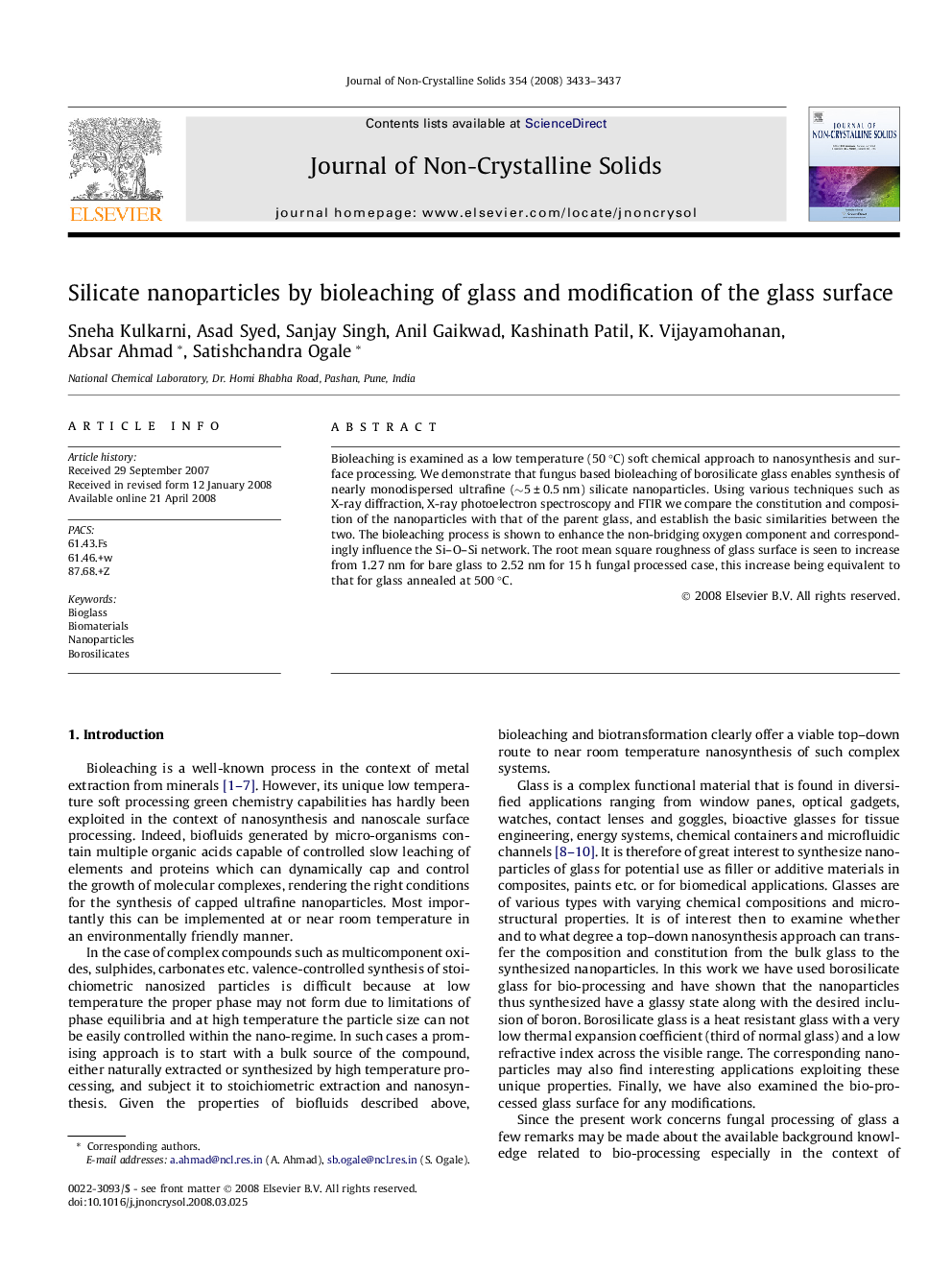| Article ID | Journal | Published Year | Pages | File Type |
|---|---|---|---|---|
| 1484259 | Journal of Non-Crystalline Solids | 2008 | 5 Pages |
Bioleaching is examined as a low temperature (50 °C) soft chemical approach to nanosynthesis and surface processing. We demonstrate that fungus based bioleaching of borosilicate glass enables synthesis of nearly monodispersed ultrafine (∼5 ± 0.5 nm) silicate nanoparticles. Using various techniques such as X-ray diffraction, X-ray photoelectron spectroscopy and FTIR we compare the constitution and composition of the nanoparticles with that of the parent glass, and establish the basic similarities between the two. The bioleaching process is shown to enhance the non-bridging oxygen component and correspondingly influence the Si–O–Si network. The root mean square roughness of glass surface is seen to increase from 1.27 nm for bare glass to 2.52 nm for 15 h fungal processed case, this increase being equivalent to that for glass annealed at 500 °C.
